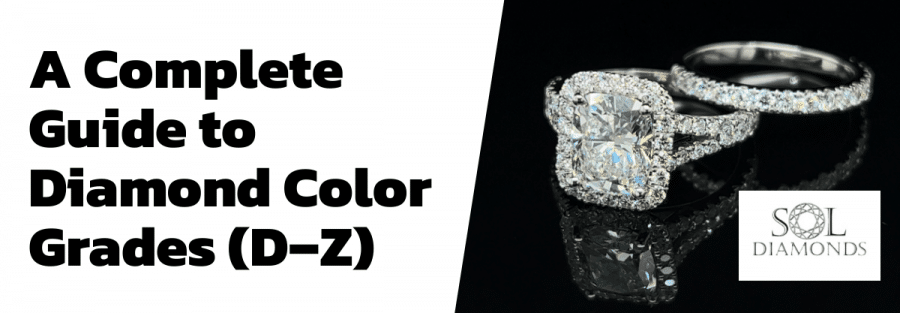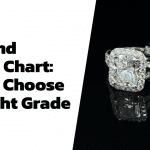Diamonds have long been symbols of luxury and enduring beauty, and understanding their color grades can elevate the experience of purchasing and appreciating these brilliant gems. When exploring diamonds, the color scale is one of the key factors that can influence a stone’s appeal and price. This guide demystifies the color grading system, focusing on shades ranging from D to Z.
The Basics of Diamond Color Grading
The color grading system for diamonds primarily evaluates how colorless a diamond is. Colorless stones tend to be more valuable because they allow more light to pass through, creating breathtaking sparkle. The scale starts at D, representing a completely colorless diamond, and moves towards Z, where subtle hints of color become increasingly noticeable.
How Is Color Graded?
Trained gemologists compare a diamond against master stones under controlled lighting conditions to determine its grade. This standardized method ensures consistency in grading, making it easier for buyers and sellers to discuss the quality and value of the gemstone.
Exploring the D–Z Spectrum
The grading range from D to Z opens a world of variety. Diamonds graded D through F are typically considered colorless and highly desirable for their pure whiteness. As you move towards the lower end of the scale, particularly G to J, diamonds may exhibit very faint traces of color that are usually not noticeable to the untrained eye.
When the grades drop between K and M, the diamond starts to show more subtle warmth or color, becoming an option for those who prefer a less icy look. Once you reach N through Z, the presence of color becomes more evident, and these diamonds are often selected for their unique hue rather than traditional brilliance.
Key Points in Color Grading
- Colorless (D-F): These diamonds have no detectable color, making them the most sought-after and expensive.
- Near Colorless (G-J): Slight traces of color may be observed, but the stones maintain a brilliant sparkle.
- Faintly Colored (K-M): Hints of warmth add personality to the diamond without diminishing its beauty.
- Lightly to Obviously Tinted (N-Z): The color becomes increasingly apparent, often chosen by those seeking a distinct, individual style.
The Role of Color in Diamond Value
The impact of color on diamond value is significant. Higher color grades not only signal purity but also suggest that the diamond will reflect light more optimally. Nevertheless, personal taste plays a crucial role. For someone desiring a diamond with a hint of character, a stone in the near colorless or faintly colored range could offer both beauty and a distinctive look at a lower price point.
Market trends show that while perfect colorlessness garners a premium, there is also a growing appreciation for diamonds that deviate slightly from the norm. Consumers increasingly seek diamonds with personality, making the full spectrum of the D–Z scale relevant to different tastes and budgets.
Why Does Color Matter?
Color influences a diamond’s appearance and contributes to its overall allure. A diamond with a superbly high color grading maximizes light performance, intensifying every sparkle and brilliance out of the stone. In contrast, diamonds with a slight tint provide a warmth that some find endearing, offering an alternative aesthetic that stands out.
Tips for Choosing the Right Diamond Color
When selecting a diamond, it is essential to balance your aesthetic preferences, practical considerations, and budget. Here are a few tips to help you navigate the decision-making process:
- Examine the Stone: Always view the diamond under various lighting conditions to see how the color grade affects its appearance.
- Consult an Expert: A reputable jeweler can offer insights into how color grades influence the stone’s sparkle and overall look.
- Consider the Setting: The type of metal used in the jewelry can complement or contrast the diamond’s color, impacting its visual appeal.
- Determine Your Preferences: Reflect on whether you desire a stone that is purely colorless or one with a hint of warmth that contributes to the diamond’s character.
Frequently Asked Questions
What does a D grade diamond signify?
A D grade diamond is completely colorless, representing the pinnacle of the color grading scale, and is highly sought after for its pure, icy brilliance.
Are near colorless diamonds noticeably different from colorless ones?
To the untrained eye, near colorless diamonds (G-J grades) look very similar to their colorless counterparts, making them a cost-effective yet stunning option.
How does the market value change for diamonds with lower color grades?
Diamonds with lower color grades typically become less expensive, as the more pronounced color impacts the overall light performance and desirability for traditional settings. However, they can also offer unique visual appeal for those pursuing a signature style.
Final Thoughts
Navigating the world of diamond color grades is both an art and a science. With a clear understanding of the D–Z scale, buyers can make informed decisions that align with their aesthetics and investment goals. The spectrum represents more than just variations in color—it reflects the diversity of tastes and the enduring value found in every unique diamond.



